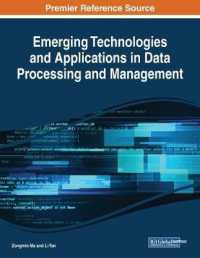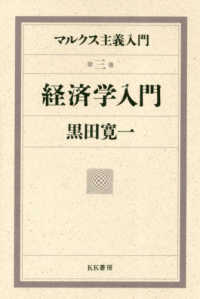- ホーム
- > 洋書
- > 英文書
- > Business / Economics
Full Description
How did Bangkok, once a modest riverside town, transform into the vibrant capital of a modern nation? This book explores the dynamic forces that reshaped Bangkok between the late 18th century and the mid-20th century, positioning it as a key economic hub in mainland Southeast Asia. As colonial trade networks expanded across Asia, Bangkok's strategic position at the mouth of the Chao Phraya River made it the natural hub for Siam's burgeoning rice trade, which brought in turn investments in transportation and banking. Chinese immigrants brought labor and entrepreneurial skills, and came in large numbers, driving unprecedented urban growth and creating a distinct ethnic division of labor. The Siamese monarchy, particularly under King Chulalongkorn, played a pivotal role as well. The crown's ventures into industry, banking, and real estate not only influenced Bangkok's physical development but also laid the foundation for its economic infrastructure. However, the monarchy's enduring influence also hindered the development of municipal governance, leaving a legacy of centralized power that persists today. The interaction of these elements—the booming rice economy, Chinese immigration, and royal enterprise—was crucial to Bangkok's initial transformation. By 1950, the city had emerged as a political and commercial capital, ready to enter the modern era. Despite subsequent waves of industrialization and globalization, the legacies of this first transformation continue to shape Bangkok's unique character, from its economic dynamics to its chaotic urban sprawl. This book offers a compelling exploration of how historical forces continue to define one of the world's most vibrant cities. Thailand's leading economic historian, Porphant Ouyyanont, was finalising this manuscript when he passed unexpectedly. Historian Chris Baker took on the task of bringing the book to completion.
Contents
Tables
Illustrations
Maps
Introduction
Chapter 1: Population
Chapter 2: Chinese Immigration and the Bangkok Labour Market
Chapter 3: City Administration under the Ministry of the Capital
Chapter 4: Physical and Economic Change
Chapter 5: The Privy Purse Bureau
Chapter 6: Trade, Transport Development and the Port of Bangkok
Chapter 7: Industrialisation
Chapter 8: Conclusion
Abbreviations
Notes and Glossary
Bibliography







